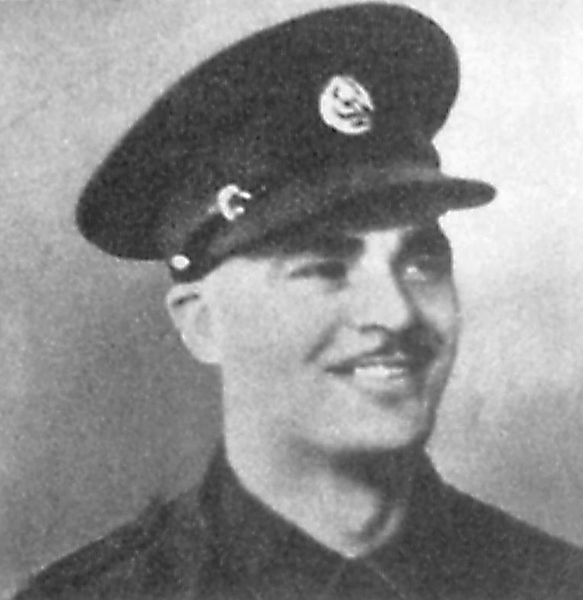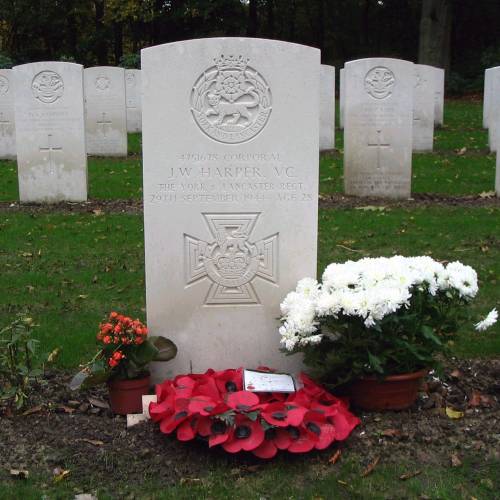- Period:
- Second World War (1939-1945)
- Rank:
- Corporal
- Unit:
- 4th Battalion York and Lancaster Regiment, 146th Infantry Brigade, 49th (West Riding) Infantry Division, British Army
"In North-West Europe, on 29th September, 1944, the Hallamshire Battalion of the York and Lancaster Regiment attacked the Depot de Mendicite, a natural defensive position surrounded by an earthen wall, and then a dyke, strongly held by the enemy. Corporal Harper was commanding the leading section in the assault. The enemy were well dug in and had a perfect field of fire across 300 yards of completely flat and exposed country. With superb disregard for the hail of mortar bombs and small arms fire which the enemy brought to bear on this open ground, Corporal Harper led his section straight up to the wall and killed or captured the enemy holding the near side. During this operation the platoon commander was seriously wounded and Corporal Harper took over control of the platoon. As the enemy on the far side of the wall were now throwing grenades over the top, Corporal Harper climbed over the wall alone, throwing grenades, and in the face of heavy, close range small arms fire, personally routed the Germans directly opposing him. He took four prisoners and shot several of the remainder of the enemy as they fled. Still completely ignoring the heavy spandau and- mortar fire, which was sweeping the area, once again he crossed the wall alone to find out whether it was possible for his platoon to wade the dyke which lay beyond. He found the dyke too deep and wide to cross, and once again he came back over the wall and received orders to try and establish his platoon on the enemy side of it. For the third time he climbed over alone, found some empty German weapon pits, and providing the covering fire urged and encouraged his section to scale the wall and dash for cover. By this action he was able to bring down sufficient covering fire to enable the rest of the company to cross the open ground and surmount the wall for the loss of only one man. Corporal Harper then left his platoon in charge of his senior section commander and walked alone along the banks of the dyke, in the face of heavy spandau fire, to find a crossing place. Eventually he made contact with the battalion attacking on his right, and found that they had located a ford. Back he came across the open ground, and, whilst directing his company commander to the ford, he was struck by a bullet which fatally wounded him and he died on the bank of the dyke. The success of the battalion in driving the enemy from the wall and back across the dyke must be largely ascribed to the superb self sacrifice and inspiring gallantry of Corporal Harper. His magnificent courage, fearlessness and devotion to duty throughout the battle set a splendid example to his men and had a decisive effect on the course of the operations."
Corporal Harper’s Victoria Cross is publicly displayed at The York and Lancaster Regiment Museum in Rotherham, Great Britain.





